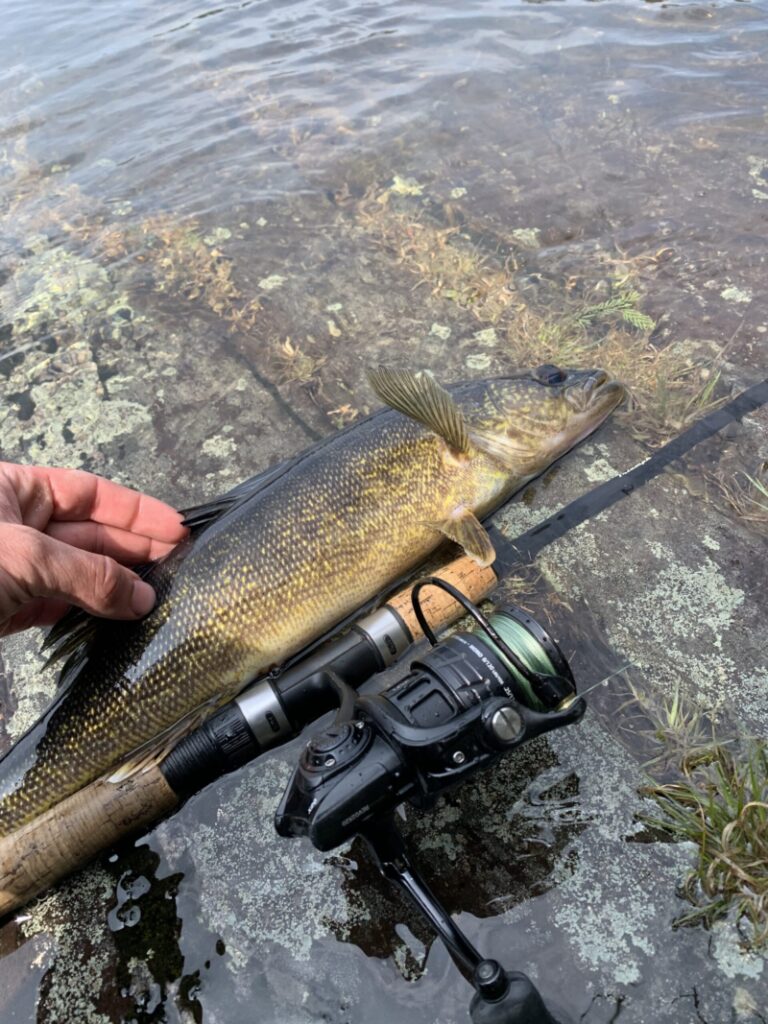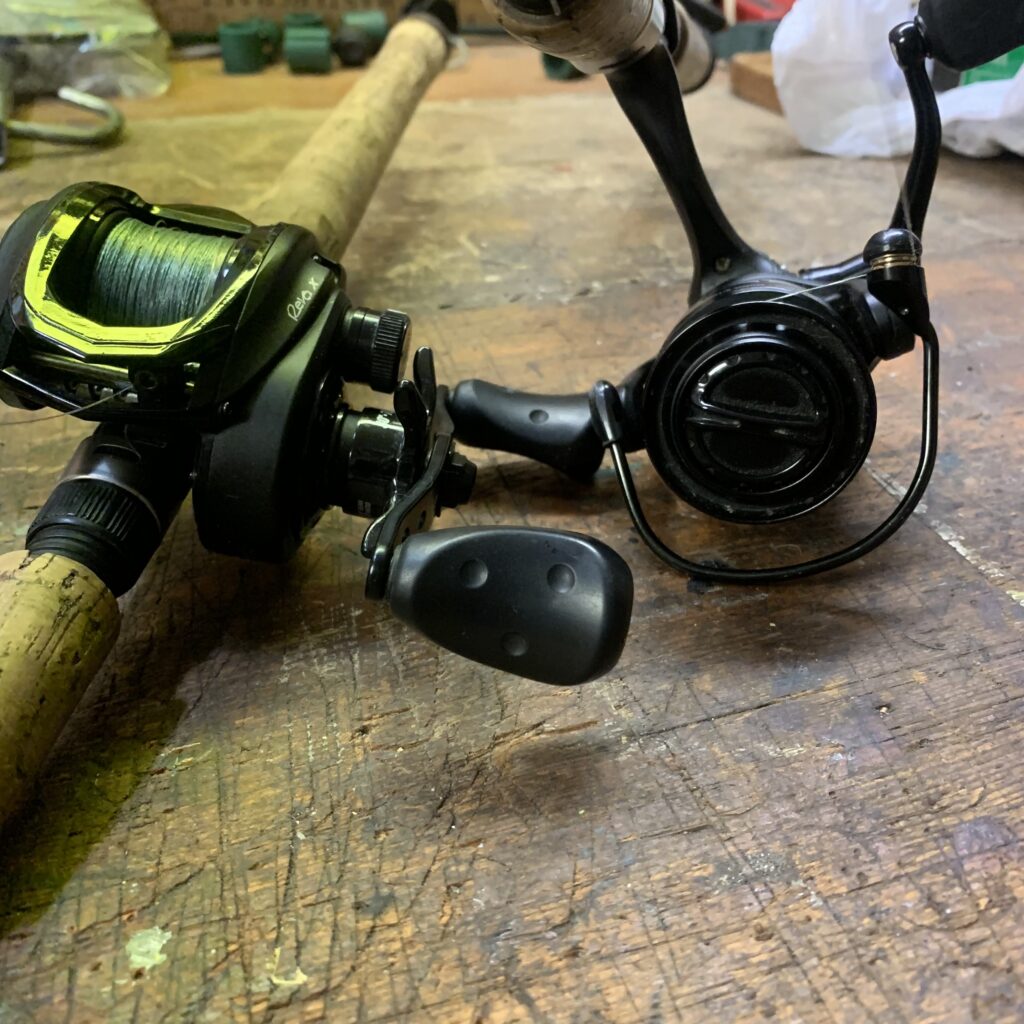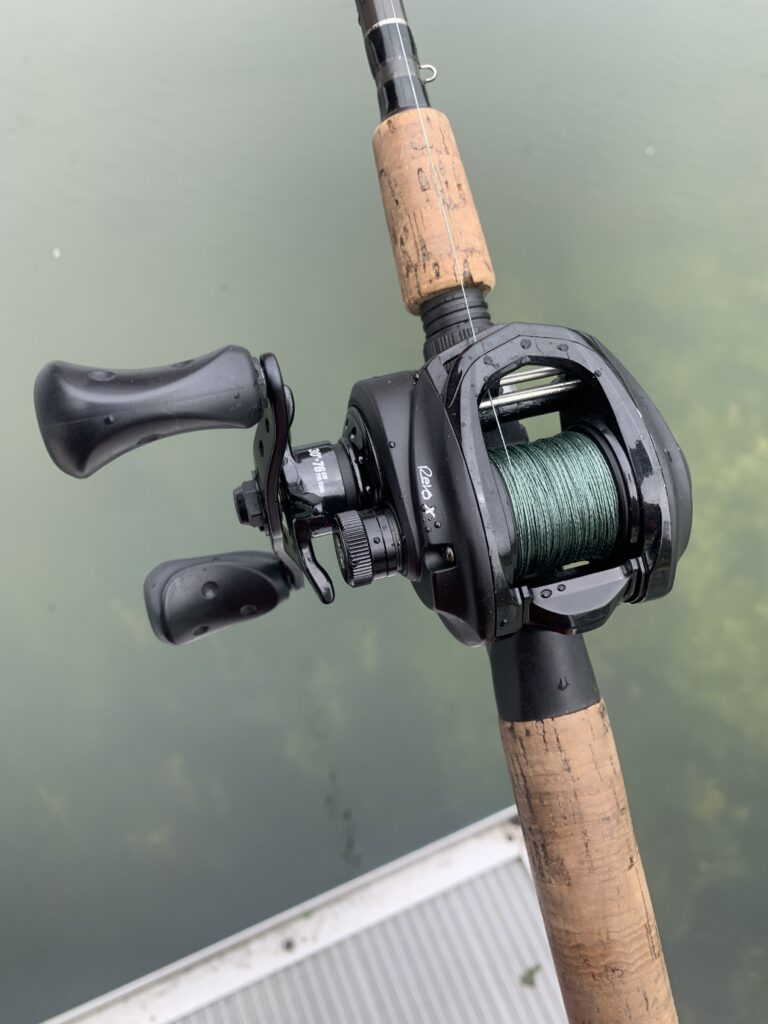Hooking into the World of Walleye Fishing
Hey there, fellow anglers! Are you ready to dive into the exciting world of walleye fishing? Most of my free time has been spent on the water, and I know the thrill and frustration that can come when chasing walleye. When it comes to choosing the right reel for walleye fishing, the debate between baitcasters and spinning reels often arises. Many anglers ask the question: are bait casters good for walleye? With baitcasting setups being extremely popular in bass fishing, I have always wondered why walleye guys have been slow to use them as well. I know that baitcasting style reels are popular when trolling for walleye, but I am talking about actively casting with baitcasters. I have experimented with using a baitcaster for walleye with many techniques to see where they excel. In this article, we’ll explore when baitcasters shine in walleye fishing and help you understand why they may be the perfect choice for your next walleye adventure. As always, fishing education and conservation are our priorities here at The Angler’s Line. Feel free to sign up for our free newsletter to join our community and stay up to date!
Table of Contents:
- Baitcasting Vs. Spinning
- Key Factors To Consider
- Baitcaster Advantages
- Tips For Using a Baitcaster
- The Time and Place For Spinning Reels
- Find Your Match
- Conservation
The Battle: Baitcasting vs. Spinning Reel
When it comes to choosing between a baitcaster reel and a spinning reel for walleye fishing, it’s essential to understand the mechanics and differences of each. Each type of reel is designed to serve a different purpose.
Exploring the Mechanics and Differences of Each Type of Reel
Baitcaster: Power and Precision
Baitcasters are known for their power and precision when casting. They provide excellent casting accuracy and control, making them ideal for fishing tight around cover. Also, you may see baitcasting reels become more and more popular among walleye fisherman with the recent introduction of forward facing sonar. Making pinpointed casts is critical when you mark a fish in the distance and make a cast at it. With a baitcaster, you can pinpoint your casts and target specific structures more effectively. One thing to keep in mind with baitcasting reels is that there is a learning curve when it comes to casting them. They aren’t quite as beginner friendly to use as spinning reels are.
Spinning Reel: Versatility and Ease of Use
On the other hand, spinning reels offer versatility and ease of use. They are known for their ability to handle lighter lures and provide a smooth and reliable drag system with light line. Spinning reels are ideal for fishing finnesse techniques that require you to downsize your gear. Additionally, spinning reels are often preferred by beginners for their user-friendly design.

Key Factors to Consider in Walleye Reel Selection
When choosing between a baitcaster and a spinning reel for walleye fishing, consider the following factors:
Casting Distance and Accuracy
Baitcasters excel in casting accuracy, allowing you to precisely place your lure in key locations. As far as casting distance goes, baitcasting reels generally work best for heavier lures. One exception to that however is the new bait finesse reels, which now enable anglers to use finesse gear with a baitcasting setup. I foresee this being a key player in the future of walleye fishing.
Spinning reels are capable of great casting distances, and excel when fishing with lighter lures. Achieving long casts is not only a result of the reel, but also the rod and line you are using. Run light line that is under 10 lb for walleye. If using braid, you can get away with under 20 lb since the line diameter of braid is smaller. For a walleye spinning rod, I recommend a 7′ to 7’6″ medium light to medium power rod. One thing to keep in mind when choosing a spinning rod is that they don’t offer the same level of accuracy as baitcasters. This is less important when fishing large pieces of cover and trying to cover water to find fish.
Line Management
I know this may spark some disagreement, but baitcasting reels offer better line control when used correctly. Spinning reels have a tendency to twist the line when you reel due to the spool position. For baitcasting reels, the line comes straight off of the spool which minimizes twisting.

At the same time, baitcasting reels have their own set of challenges when first starting out. The infamous birds nest is sure to happen several times when first learning to use a baitcasting reel. This is the result of the brakes being set to loose and not stopping the reel prior to the bait entering the water. This will go away with time and practice on the water, trust me.
Targeting Walleye-Specific Techniques
Consider the specific walleye fishing techniques you plan to use. Baitcasters for walleye fishing are excellent for techniques such as pitching jigs, flipping, and casting heavier lures. Spinning reels, on the other hand, are versatile and can handle finesse techniques, light tackle, and situations where precision casting is not as critical.
The Advantages of Baitcasters For Walleye Fishing
Now let’s dive into why baitcasters shine in walleye fishing and the advantages they bring to the table.
Increased Casting Accuracy for Precise Walleye Fishing Presentations
One of the significant advantages of baitcasters is their ability to provide increased casting accuracy. This may seem more advantageous for bass fisherman fishing docks or other visible shoreline cover, however I believe that forward facing sonar and side imaging may have changed this in the walleye world. With this new technology, you need to make accurate casts based on the fish you mark. When using a baitcasting reel you can adjust the distance that a lure travels by applying pressure to the spool with your thumb. With a spinning reel, you pretty much have no control once the lure is in the air. The precision offered by baitcasters allows you to fine-tune your lure placement which can make a big difference.
Enhanced Depth Control When Trolling For Walleye
Depth control really comes into play when hand trolling for walleye. I personally love hand trolling with spinner rigs and inline weigths along weed edges to cover water and find active fish. With the click of a button you can put a baitcasting reel into free spool. Imagine trolling along a steeper weed edge where your depth is constantly fluctuating. Hopefully now you can see my point. Clicking a button to adjust depth is much easier and quicker than opening and closing the bail on a spinning reel.
Optimal Gear Ratios and Power for Fighting Walleye
Baitcasters are designed to handle heavier lures and provide optimal gear ratios for efficient retrieval and fighting fish. Compared to spinning reels, baitcasting reels have higher gear ratios availabe. Simply put, this means that they take up more line per turn of the handle. This comes into play when fishing fast and aggressive presentations for walleye, such as snap jigging. These types of techniques use heavy lures and rely on speed to trigger bites. This is where a higher gear ratio baitcasting reel is a good option when walleye fishing.
If you a hunting trophies, a baitcaster is a great option as well. Baitcasting reels are designed to handle large lures and overcome the resistance from a true monster walleye.
Tips for Using A Baitcaster For Walleye Fishing
If you decide to go with a baitcaster for walleye fishing adventures, here are some helpful tips to make the most of your gear:
Choosing the Right Baitcasting Setup For Walleye Fishing
Select a baitcasting rod and reel combination that suits your walleye fishing style. Consider the rod’s length, power, and action, as well as the reel’s gear ratio and line capacity. A medium to medium-heavy baitcasting rod paired with a baitcasting reel that has a gear ratio between 6:1 and 7:1 is a good starting point.
Mastering Baitcasting Techniques for Walleye Success
Practice thumb control to achieve accurate casting and line management. At first, adjust the reel’s braking system and spool tension knob until the bait drops very slowly when in free spool. As you get the hang of it you can gradually decrease the resistance on the spool to maximize casting distance. Take time to fine-tune your technique, and soon you’ll be casting with precision and confidence for walleye.
The Role of Spinning Reels in Walleye Fishing
While baitcasters shine in many aspects of walleye fishing, spinning reels still have their place and advantages.
Recognizing the Advantages of Spinning Reels
Spinning reels excel in casting lighter lures with ease. They provide versatility for finesse techniques and many jigging applications for walleye. Additionally, use spinning reels in situations where precision casting is not as crucial. Spinning reels also have a smooth and reliable drag system designed for light line, which can be advantageous when targeting walleye.
When to Choose a Spinning Reel for Walleye Fishing
A spinning rod and reel would be my recommendation to any beginner angler getting started in walleye fishing. They are much easier to use and way more beginner friendly. Additionally, some common walleye techniques where a spinning reel is the clear favorite for me include a jig and live bait, jigging rap, slip bobber, and finesse plastics.
Finding Your Reel Match for Walleye Fishing
In the end, choosing between a baitcaster and a spinning reel for walleye fishing depends on your fishing style, techniques, and personal preferences. There is no end all be all when it comes to choosing a baitcasting or spinning setup. Both have their own advantages and disadvantages. However, I think a lot of guys like to write off baitcasters all together when it comes to walleye fishing. Baitcasters shine in terms of increased casting accuracy, enhanced line and depth control, and handling heavier lures. They offer a level of precision and control that can make a significant difference in your walleye fishing success.
Conservation and Ethical Fishing Practices
As responsible anglers, it’s crucial to prioritize conservation and practice ethical fishing. Adhere to catch-and-release guidelines whenever possible to preserve the walleye population for future generations. Handle fish with care, use barbless hooks to minimize injury, and return them to the water as quickly and gently as possible. Respect fish and wildlife habitats by minimizing your impact and leaving the environment as pristine as you found it.
Congratulations, fellow anglers! Hopefully now you have learned about when and where baitcasting reels comes into play when walleye fishing. Remember to consider the behavior and feeding habits of walleye when selecting the right rig for each situation. Tight Lines!
